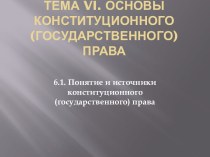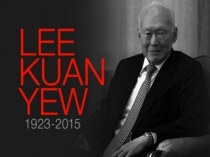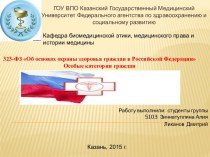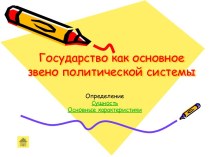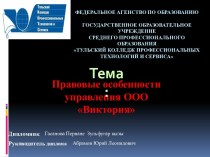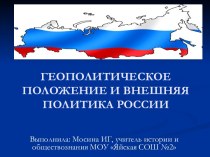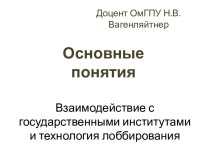- Главная
- Разное
- Бизнес и предпринимательство
- Образование
- Развлечения
- Государство
- Спорт
- Графика
- Культурология
- Еда и кулинария
- Лингвистика
- Религиоведение
- Черчение
- Физкультура
- ИЗО
- Психология
- Социология
- Английский язык
- Астрономия
- Алгебра
- Биология
- География
- Геометрия
- Детские презентации
- Информатика
- История
- Литература
- Маркетинг
- Математика
- Медицина
- Менеджмент
- Музыка
- МХК
- Немецкий язык
- ОБЖ
- Обществознание
- Окружающий мир
- Педагогика
- Русский язык
- Технология
- Физика
- Философия
- Химия
- Шаблоны, картинки для презентаций
- Экология
- Экономика
- Юриспруденция
Что такое findslide.org?
FindSlide.org - это сайт презентаций, докладов, шаблонов в формате PowerPoint.
Обратная связь
Email: Нажмите что бы посмотреть
Презентация на тему Challenges to international order
Содержание
- 2. Challenges to international order Part IISession 13
- 3. Chemical and biological weaponsPreventing genocide and other violations of human rightsThe North/South divide
- 4. 1945 - Hiroshima and Nagasakithe Cold War,
- 5. Weapons of Mass DestructionHiroshima— could not be
- 6. Weapons of Mass DestructionChemical and biological weapons,
- 7. Prior to 1945, relations between a state
- 8. Human Rights—Protecting Human DignityXIXcentury - individuals became
- 9. XX century - with mass communication and
- 10. The Holocaustthe German Nazi genocide against JewsGypsiesHomosexualsthe
- 11. The UN’s activities and the activities of
- 12. 3. The United Nations has taken measures
- 13. 4. States and the international community are
- 14. Women’s Rights as Human Rights: The Globalization
- 15. Although British and U.S. women won that
- 16. In the immediate aftermath of the declaration,
- 17. EVOLVING POLITICAL AND ECONOMIC RIGHTS During the
- 18. Women in development (WID) movement, a transnational
- 19. One of the most intractable problems in
- 20. A third group, the Newly Industrializing Countries
- 21. The success of the ‘Tiger’ economies -
- 22. No less than 16 of the 20
- 23. The process of globalization which enables financial
- 24. Those LDCs which produce commodities which are
- 25. Karen A. Mingst, Ivan M. Arreguin-Toft. Essentials of
- 26. Скачать презентацию
- 27. Похожие презентации
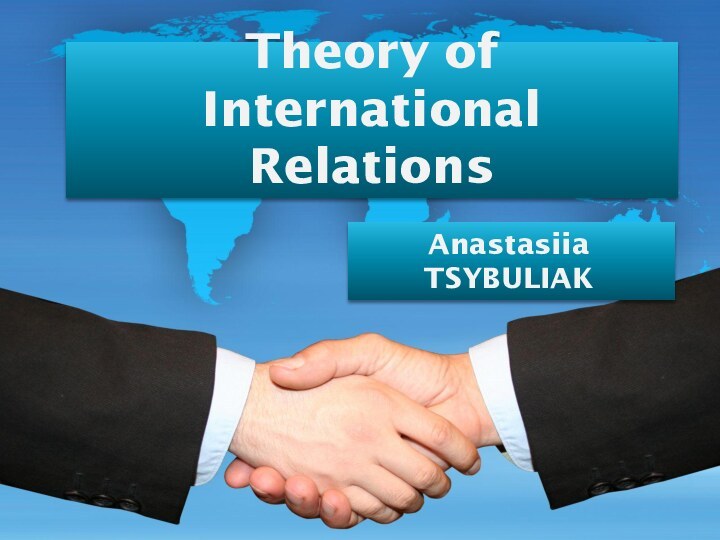

























Слайд 4
1945 - Hiroshima and Nagasaki
the Cold War, both
the United States and the Soviet Union constructed bigger
and more lethal weapons, developing more accurate delivery systems, ballistic missiles, and cruise missiles, each capable of reaching around the world and killing the earth’s population many times over.Weapons of Mass Destruction
Слайд 5
Weapons of Mass Destruction
Hiroshima— could not be restricted
to the target only, but might rapidly escalate into
an exchange that could extinguish life on earth, either by radiation from fallout, or by altering the climate in a“Nuclear winter” - mutual assured destruction (or MAD) led the major antagonists to shelve plans to fight using nuclear weapons.
Слайд 6
Weapons of Mass Destruction
Chemical and biological weapons, together
with nuclear weapons, make up the more general category
of weapons o f mass destruction (WMD).The possibility that Saddam Hussein was developing WMD led to the 2003 U.S. invasion of Iraq.
Слайд 7 Prior to 1945, relations between a state and
the individuals within the state were largely that state’s
concern.In 1815 the major European powers began to negotiate a treaty, finally concluded in 1890, that recognized the obligation of states to abolish the slave trade.
But not until 1926 did the international community abolish the practice of slavery.
Human Rights—Protecting Human Dignity
Слайд 8
Human Rights—Protecting Human Dignity
XIXcentury - individuals became entitled
to medical treatment by belligerent states during war.
XX
century- legal aliens became entitled to minimum civil rights within a state. Laborers achieved some protection under the International Labor Organization, and specific minorities from the vanquished states of World War I were granted nominal international rights by the League of Nations. But the protection of individuals for all other purposes remained solely a state responsibility.Слайд 9 XX century - with mass communication and the
spread of information about how countries were treating their
populations, a contending position emerged. That position was based on the realization that how a government treats its own citizens can affect the larger global community. Mistreatment of individuals and minorities can inflame ethnic tensions, causing unrest across national borders.Conceptualizing Human Rights and the Development of a Regime
Слайд 10
The Holocaust
the German Nazi genocide against Jews
Gypsies
Homosexuals
the disabled
and countless other minorities
Conceptualizing Human Rights and the Development
of a RegimeСлайд 11 The UN’s activities and the activities of other
international organizations concerned with human rights have been confined
to several areas.1. The United Nations has been involved in the setting of the international human rights standards articulated in many treaties, prohibiting race and gender discrimination, protecting refugees and children, and constraining the actions of combatants during war.
2. International and regional organizations have worked to monitor state behavior.
Conceptualizing Human Rights and the Development of a Regime
Слайд 12 3. The United Nations has taken measures to
promote human rights by assuring fair elections with neutral
monitors and providing a focal point for global human rights activity in the person of the High Commissioner for Human Rights. For example, since 1992, the United Nations has provided electoral assistance—election monitors and technical assistance—to many countries, including Afghanistan and Iraq. It has actually conducted elections in Namibia, Nicaragua, Cambodia, Eritrea, and Liberia, among other states.Conceptualizing Human Rights and the Development of a Regime
Слайд 13 4. States and the international community are the
primary enforcers of international human rights. States have always
been the major enforcers of human rights and remain so. States can use their legal systems under the principle of universal jurisdiction, as when Spain tried to extradite the former dictator of Chile, General Augusto Pinochet, from Britain to Spain for trial for abuses against Spanish citizens.Conceptualizing Human Rights and the Development of a Regime
Слайд 14
Women’s Rights as Human Rights: The Globalization of
Women’s Rights
An examination of how women’s rights has moved
from the national to the international agenda illustrates many of the principles and problems we have just delineated. Women’s rights, like other human rights issues, touch directly on cultural values and norms, yet like other human rights issues, they have gradually become a transnational issue.20 As a UN poster prepared for the Vienna Conference in 1993 headlined, Women’s Rights Are Human Rights. This has not always been the case in the eyes of the world. Слайд 15 Although British and U.S. women won that right
in 1918 and 1920, respectively, women in many parts
of the world had to wait until World War II and after.In some Middle Eastern countries, women still do not have the vote, or else it is limited to local elections. Thus, although the efforts of Eleanor Roosevelt and her Latin American colleagues led to the inclusion of gender in the Universal Declaration of Human Rights (1949), at the time, gender discrimination was not yet globally seen as a human rights issue.
EVOLVING POLITICAL AND ECONOMIC RIGHTS
Слайд 16
In the immediate aftermath of the declaration, the
priority of the United Nations and its Commission on
the Status of Women was getting states to grant women the right to vote, hold office, and enjoy legal rights, part of first-generation human rights.Specifically, this led to the drafting of the Conventions on the Political Rights of Women in 1952, the Nationality of Married Women in 1957, and the Consent to Marriage in 1962. These actions helped to set the standard for assessing women’s political rights.
1979 Convention on the Elimination of All Forms of Discrimination Against Women (CEDAW)
EVOLVING POLITICAL AND ECONOMIC RIGHTS
Слайд 17
EVOLVING POLITICAL AND ECONOMIC RIGHTS
During the 1960s
and 1970s, more attention was paid to second-generation human
rights—economic and social rights—for women. The network of NGOs and IGOs charged with economic development had believed for many years that all individuals, including women, could participate and benefit equally from the economic development process.1940s, they found that not to be the case. Esther Boserup’s landmark book, Womens Role in Economic Development, recorded the finding that as technology improves, men benefit, but women become increasingly marginalized economically. Women would need special attention if they were to become participants in and beneficiaries of development.
Слайд 18 Women in development (WID) movement, a transnational movement
concerned with the failure of development to make an
impact on the lives of the poor and with systematic discrimination against women.Today the WID agenda is well integrated into most international assistance programs.
EVOLVING POLITICAL AND ECONOMIC RIGHTS
Слайд 19 One of the most intractable problems in international
relations is the polarization between the Advanced Industrial Countries
(AICs) of the Global North and the poverty-stricken Global South Less Developed Countries (LDCs).The typical developed state of the Global North is one where there is self-sustained economic growth in all industrial sectors – primary, secondary, and tertiary.
LDCs are, in contrast, characterized by low GDP, low per capita GDP, low per capita growth and low life expectancy combined with high population growth rates.
The North/South divide
Слайд 20 A third group, the Newly Industrializing Countries (NICs)
of which key examples are South Korea, Taiwan, Singapore,
and Hong Kong, have sometimes been termed the ‘Tiger’ economies because of their swift industrial expansions and their success in achieving export-led economic growth.The North/South divide
Слайд 21 The success of the ‘Tiger’ economies - 2006
which show, for example, Hong Kong with a higher
per capita GDP than Germany, Canada, Belgium, and France; and Singapore with a higher per capita GDP than Australia and Italy. Hong Kong, Singapore, and Taiwan are in the top 20 per cent of countries with the highest purchasing power.Singapore, Malaysia, South Korea, and Taiwan were all in the top 10 per cent of countries with the highest economic growth, 1991–2001.
The North/South divide
Слайд 22 No less than 16 of the 20 countries
with the lowest GDP per head are in Africa.
Many LDCs have negative annual growth rates of per capita income. Demographers estimate that the world population will grow from its current (2006) total of over six billion to between 10 and 12 billion in 2050, depending on whether world fertility will continue to decline.Conflict - in Africa, over 30 per cent of countries have experienced particularly lethal wars which have driven people out of their farms and villages. Last but not least, the plight of the Global South countries has been made infinitely worse by environmental disasters such as drought, desertification, and deforestation.
The North/South divide
Слайд 23 The process of globalization which enables financial and
investment markets to operate internationally, mainly as a result
of deregulation and improved communications, and which allows companies to expand and operate internationally, have not had the result of narrowing the gap between the AICs of the Global North and the LDCs of the Global South. On the contrary, the main effect has been to make the Global North states richer, because when they do choose to locate manufacturing plants in LDCs, the profit from these enterprises mainly benefits the Global North.The North/South divide
Слайд 24 Those LDCs which produce commodities which are in
high demand in the AICs, such as oil and
natural gas, are likely to become beneficiaries of globalization.The rest of the LDCs have become more and more dependent on aid because if they were to rely solely on the production of a simple agricultural produce, such as coffee or bananas, they would simply remain in the poverty trap forever.
It was hoped that the World Trade Organization talks of 2006 would find ways of considerably reducing these obstacles, which in effect prevent LDCs from benefiting from the world trade system, but at the time of writing there was no significant breakthrough in sight.
The North/South divide
Слайд 25
Karen A. Mingst, Ivan M. Arreguin-Toft. Essentials of International
Relations. 5th Ed. 2010: New York: W.W. Norton &
Co. ISBN 978-0393935295Robert Jackson, Georg Sorensen. Introduction to International Relations: Theories and Approaches. 4th edition, 2010: Oxford University Press. ISBN 978-0199548842
Paul Wilkinson. International Relations: A Very Short Introduction (Very Short Introductions). 1st edition. 2007: Oxford Paperbacks. ISBN 978-0192801579
Recommended Literature




